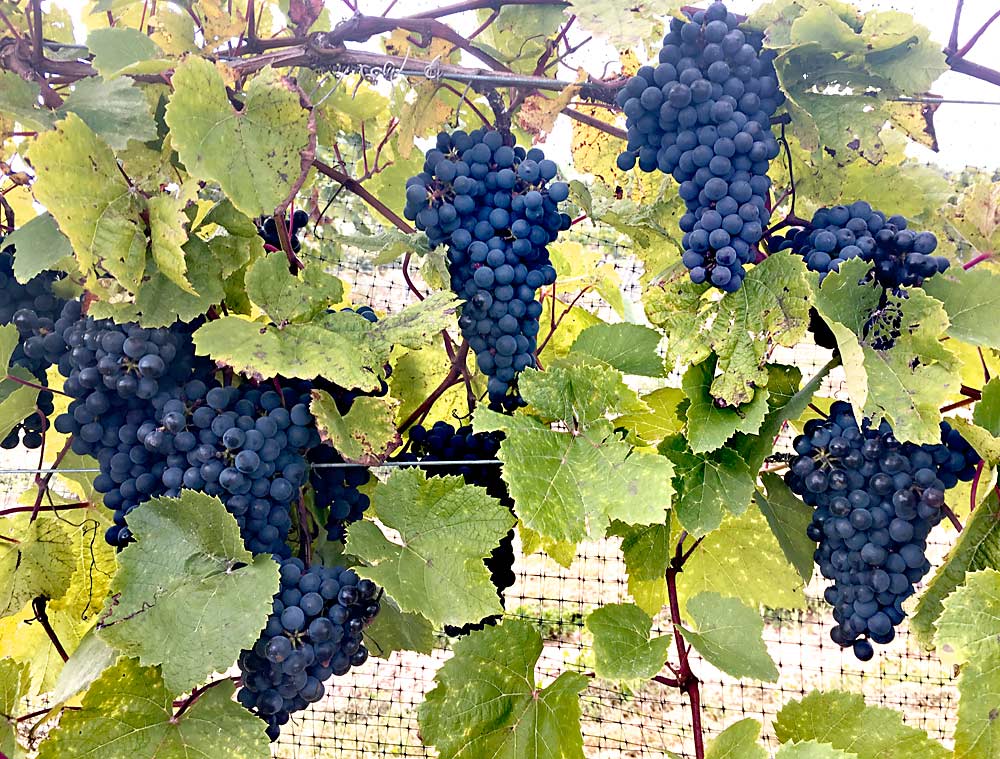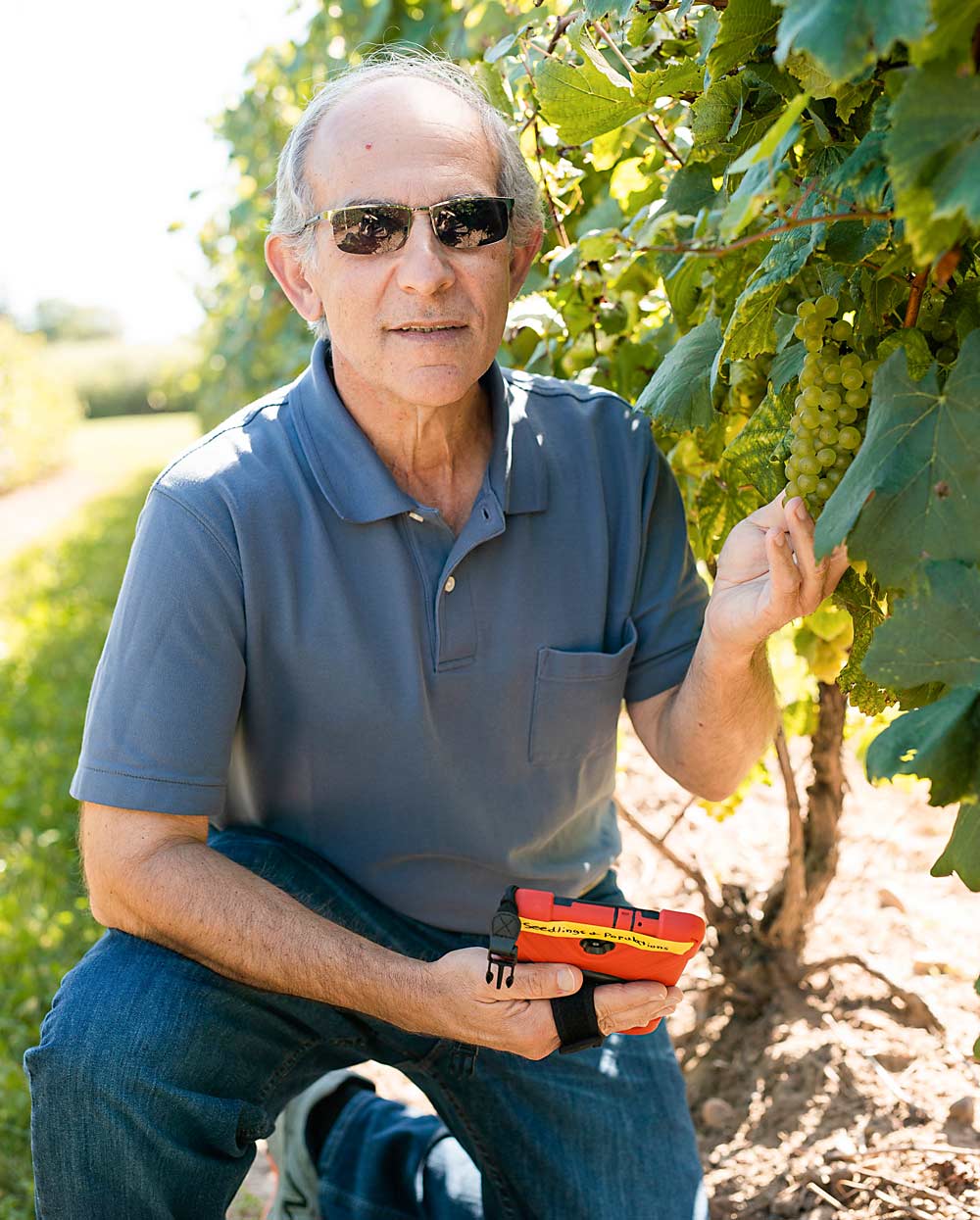
A high-tech approach promises to shave years off the grape-breeding process by identifying which potential parent vines carry specific genetic characteristics. It also can reveal whether new seedling crosses have those desired traits from the get-go, without the need to wait one or more seasons for them to manifest in the field.
“It’s a huge difference in how we’re able to go about developing new fruit varieties,” said Bruce Reisch, leader of Cornell University’s Grapevine Breeding and Genetics Program and a member of the research team developing the approach.
“The ultimate winner is the grower interested in a new and better variety, one with disease resistance and high quality,” Reisch said. “Now we can get to that goal that much more accurately and a bit more quickly.”
How it works

The approach is based on DNA markers, which are snippets of genetic code associated with genes that control various traits. In other words, each unique DNA marker serves as a signpost that not only indicates the presence of a particular gene but also shows where the gene is located among the more than 30,000 genes that make up a grapevine’s genome.
Reisch and Lance Cadle-Davidson, a U.S. Department of Agriculture research plant pathologist, have developed DNA markers for different traits over the past decade as co-directors of the VitisGen and now VitisGen2 projects. These USDA-funded, multi-institution efforts now include a team of 25 researchers from across the country.
The VitisGen2 project team has made significant progress developing DNA markers within those regions of the genome that are common to all grapes — whether cultivated wine and table grapes, or wild grapes — so they could begin building a directory for DNA markers, including those linked to genetic traits of special interest to breeders. It was initially slow going.
“When we started about 10 years ago, we could look at one to four DNA markers per genetic test, and to make a genetic map with a hundred or more markers, it would take about one year of work for a postdoctoral scientist. It was very expensive,” said Cadle-Davidson.
In March 2019, however, Integrated DNA Technologies Inc. of Coralville, Iowa, released new marker technology, called rhAmpSeq, that sped up the process considerably by allowing many markers to be run in a single test. As of September, the VitisGen2 project team had used rhAmpSeq to run 2,057 markers per genetic test. Not only that, Cadle-Davidson said, they can scan up to 7,000 grapevines at a time.
“It’s really accelerated what we can do, and it’s drastically reduced the cost of what we can do,” he said.
What it means
The upshot from this technology is that the researchers now have a collection of DNA markers that are consistent across grapes.

“If we find a really nice marker-trait association for Bruce’s breeding program at Cornell, we find that the same marker predicts the same trait in a breeding program in California, Minnesota or Germany, or wherever it might be,” Cadle-Davidson said.
That transferability, as Cadle-Davidson calls it, used to be quite difficult between breeding programs. He used seedlessness as an example of a desired trait that is controlled by a particular version, or allele, of a gene.
“Any breeder in the world could use this marker platform and know that this one DNA marker is the one they want,” Cadle-Davidson said. “And we’ve done that now for dozens of traits, primarily focused on fruit quality and disease resistance, which are the two main areas that the VitisGen2 project focuses on.”
Reisch is especially interested in resistance to powdery and downy mildew, and he works with Cadle-Davidson and other team members to develop DNA markers for each of several mildew-fighting alleles. Ultimately, he would like to breed grapes that have multiple resistance alleles so the vines can defend against several strains of mildew that exist naturally in the field.
“You’re planting a vine for 30 years or more when you’re a grower, so by having multiple genes, you’re on the way to having better stability and more of a long-lasting effect against these diseases,” Reisch said.
Grower benefits
This technology will be valuable for an ever-increasing number of desirable traits, Reisch said. The program already uses markers for fruit quality traits and self-fertile flowers, but he envisions using markers to help breed climate-change-adapted varieties.
“We’re looking, for instance, at time of flowering, which could help (by) pushing back bud break and pushing flowering just a little bit later, but still having an early-enough ripening crop to avoid any frost,” Reisch said. Research is also underway, albeit in the early stages, to identify complex attributes that are actually combinations of numerous individual traits. For example, yield encompasses traits ranging from fruit set and size to number of clusters per vine.
Cadle-Davidson is similarly optimistic about the possibilities of the new technology and the pace with which it’s being adopted.
“We’ve already seen international advancement in information from collaborations with Germany, with Chile, and with people around the world using this platform, and that’s just in the last nine months,” he said. “I never expected that this marker platform would work as well as it has. Over the course of my career, we’ve gone from one platform to another and another, and this is far and away the best. It’s the one I want to work on for the rest of my career. Period.” •
—by Leslie Mertz






Leave A Comment